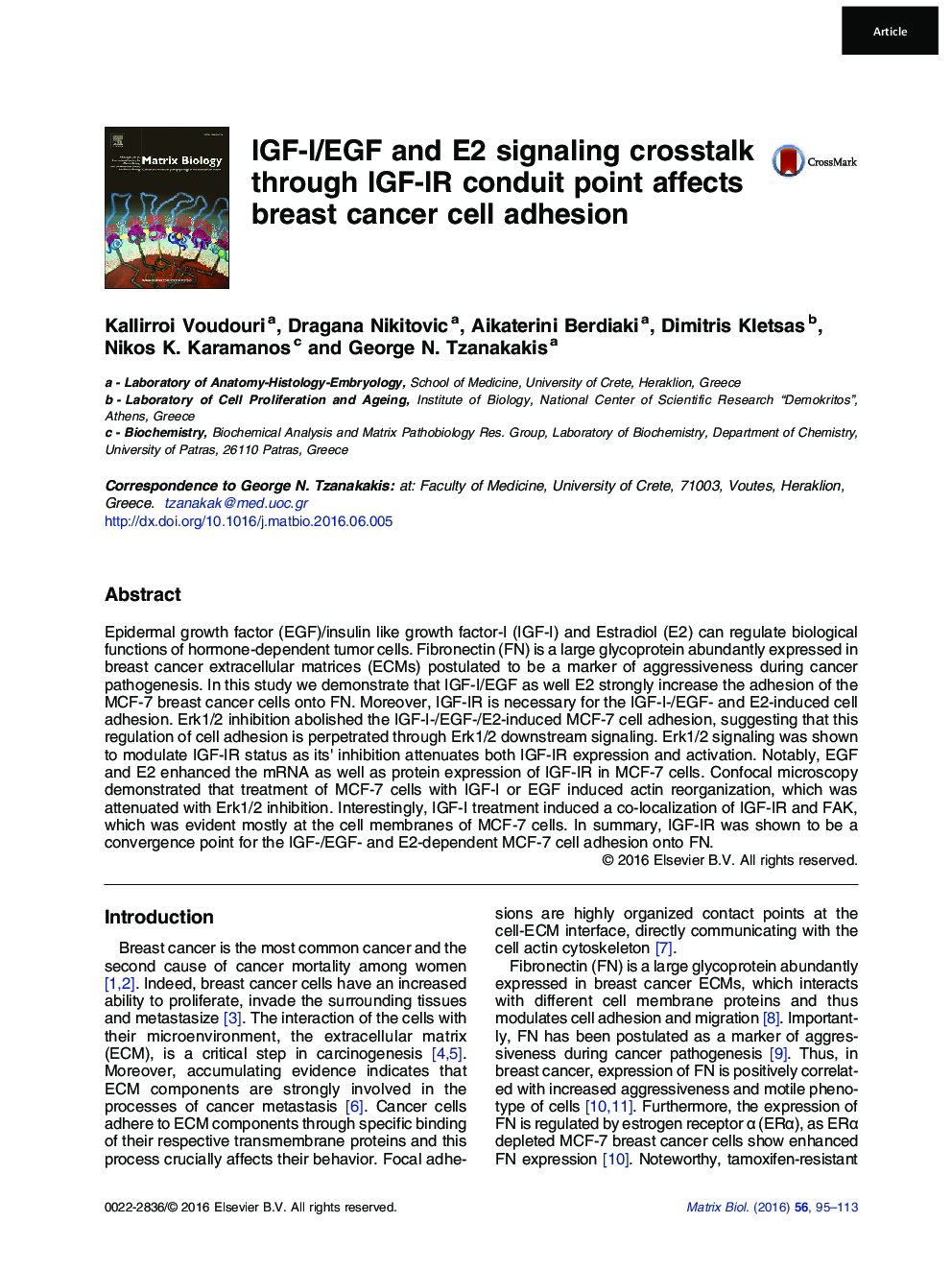| Article ID | Journal | Published Year | Pages | File Type |
|---|---|---|---|---|
| 5528551 | Matrix Biology | 2016 | 19 Pages |
â¢EGF/IGF-I and E2 can regulate biological functions of hormone-dependent tumor cells.â¢IGF-IR is necessary for the IGF-I-/EGF-and E2-induced cell adhesion.â¢Erk1/2 signaling was shown to modulate IGF-IR status.â¢IGF-I treatment induced a co-localization of IGF-IR and FAK.â¢IGF-IR is a convergence point for the IGF-/EGF- and E2-dependent MCF-7 cell adhesion onto FN.
Epidermal growth factor (EGF)/insulin like growth factor-I (IGF-I) and Estradiol (E2) can regulate biological functions of hormone-dependent tumor cells. Fibronectin (FN) is a large glycoprotein abundantly expressed in breast cancer extracellular matrices (ECMs) postulated to be a marker of aggressiveness during cancer pathogenesis. In this study we demonstrate that IGF-I/EGF as well E2 strongly increase the adhesion of the MCF-7 breast cancer cells onto FN. Moreover, IGF-IR is necessary for the IGF-I-/EGF- and E2-induced cell adhesion. Erk1/2 inhibition abolished the IGF-I-/EGF-/E2-induced MCF-7 cell adhesion, suggesting that this regulation of cell adhesion is perpetrated through Erk1/2 downstream signaling. Erk1/2 signaling was shown to modulate IGF-IR status as its' inhibition attenuates both IGF-IR expression and activation. Notably, EGF and E2 enhanced the mRNA as well as protein expression of IGF-IR in MCF-7 cells. Confocal microscopy demonstrated that treatment of MCF-7 cells with IGF-I or EGF induced actin reorganization, which was attenuated with Erk1/2 inhibition. Interestingly, IGF-I treatment induced a co-localization of IGF-IR and FAK, which was evident mostly at the cell membranes of MCF-7 cells. In summary, IGF-IR was shown to be a convergence point for the IGF-/EGF- and E2-dependent MCF-7 cell adhesion onto FN.
